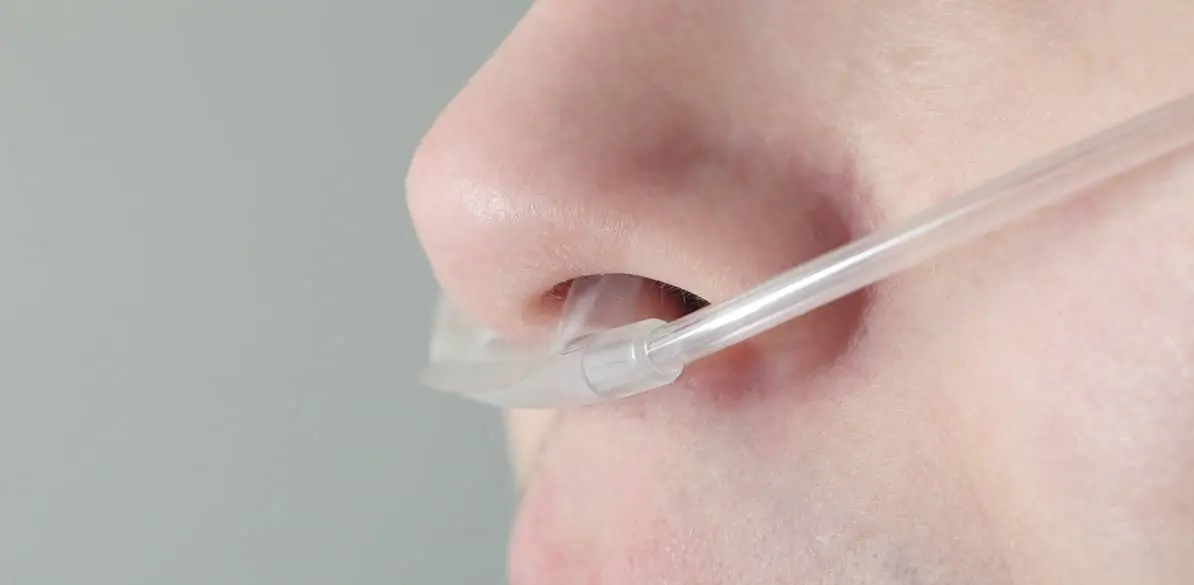Syncopes of respiratory, water-electrolyte, somatization or pharmacological origin and their influence in driving

Respiratory encephalopathy
The decompensation of chronic bronchopneumopathies with emphysema is the most common cause of respiratory encephalopathy. The hypoxia is associated with hypercapnia and consequent acidosis of the nerve cells.
Hypoxemia can cause, in addition to dyspnea, confusional state, malaise or even loss of consciouness.
Brain vasodilatation often occurs, with intracranial hypertension, and polyglobulia with increased blood viscosity and increased brain suffering.
Psychical and alertness disorders are the most common. Abnormal movements of the extremities are frequently associated, as myoclonic shakes or tremor.
The improvement of the respiratory failure for the appropriate alveolar ventilation is evidenced as a reduction in dyspnea and consciouess disorders.
Most patients with with COPD have it for smoking. Snmoking reduces the ability to drive due to the high CO levels present inside the car.
Cough fits with maintained Valsalva maneouver can provoke syncope, due to the increased intrathoracic pressure that reduces venous return, heart output and blood pressure.
It can be considered that some patients with bronchopathy are more susceptible and are at a higher risk of suffering a syncope.
Recommendation on respiratory encephalopathy
- In addition to recommending our patients with COPD to give up smoking in order not to die from their disease, they should be reminded that they are more susceptible to the CO held inside the car, in addition to the hypoxia they already suffer.
- If they will not give up smoking, at least they should air the car.
- Perhaps, these patients would obtain the greatest benefit from a smoke-free environment at home and in the car, since if those around them continue smoking, they will hardly isolate from smoking.
- The patient who has suffered a loss of consciousness for anoxia or poisoning by CO should be assessed by the specialist for the possible neurological sequels that will limit driving.
- Until the patient does not have the medical report permitting him to drive, he cannot do it even if he is apparently well.
- Driving with dyspnea, consciousness disorders, dizziness, or difficult concentration and attention due to hypoxia is not permitted.
- The patient with COPD should be warned of the risk of starting with symptoms of hypoxia and CO2 retention in case of a complication of his disease, such as a cold or a respiratory infection.
- The patient with complicated COPD and neurological symptoms cannot drive and should go as soon as possible to his physician so that he establishes the appropriate treatment.
- The physician will report on the complete improvement of the patient who will permit him to drive again.
Electrolyte imbalance
This situation can originate cerebral dysfunction and lead to signs of encephalopathy.
The inadequate secretion of ADH hormone provokes states of hypoosmolality with hyponatremia, causing confusionales states, with risk of seizures and possible coma.
Some diabetic patients treated with chlorpropamide, which has antidiuretic activity, suffer similar situations.
Hypercalcemia can lead to nervous manifestations such as depression, intellectual impairment, or pseudotumor cerebri syndrome.
The hypocalcemia associated with a state of neuromuscular hyperexcitability and tetany crisis can cause signs of brain suffer with slow intellectual function and often seizures and loss of consciouness.
Recommendation on electrolyte imbalance
- Water-electrolyte disorders associated with the risk of syncope prevent from driving, until the causal disease is controlled and the physician permits it.
Somatization disoder
Neurotic disease characterized by multiple somatic symptoms, including those occurring as hysteria of classical conversion, and often associated with anxiety and depression.
It is characterized by the presence of headache, nausea, vomiting, abdominal pain, digestive disoders, asthenia, and syncope.
Recommendation on somatization disorder
- The intervention of the physician listening to the patient and paying attention to his possible psychological and emotional state is favorable.
- This attention enables to reduce the number of drugs and replace them by a more emotional attention.
- The patient who despite treatment is at risk of syncope must not drive.
Drugs
Some of the drugs currently used in our patients can cause syncope.
It is the case of intoxication by digitalis, volume depletion caused by diuretics, hypotension provoked by peripheral vasodilators or quinidine, and the severe postural hypotension caused by chlorpromacinea and some hypotensives.
Antiarrhythmic drugs play a major role in the treatment of most significant arrhythmias. All drugs have limitations and can even worsen or enhance the appearance of other arrhythmias.
It is frequent that the dose or the treatment should be switched until the most appropriate drug is selected.
Recommendation on drug intake to control syncope
- The pharmacological control of arrhythmia is not simple and as long as there is not risk of syncope, the patient must not drive.
- The physician should explain to his patient that though apparently he feels well with the medicines, while the risk of syncope persist, it is recommended not to drive for his safety and that of others.
- Drug therapy with a favorable outcome and always after a more or less prolonged safety period when the patient has no symptoms, will permit the physician to assess the possibility that this patient drives again, provided there is no risk of loss of consciousness.
- These drivers, though controlled, should know that on long travels they should lead accompanied by people who know their problem, for the case of unexpected events arising.
- The medical report must be in a visible place inside the car, in order to be adequately managed if needed.
